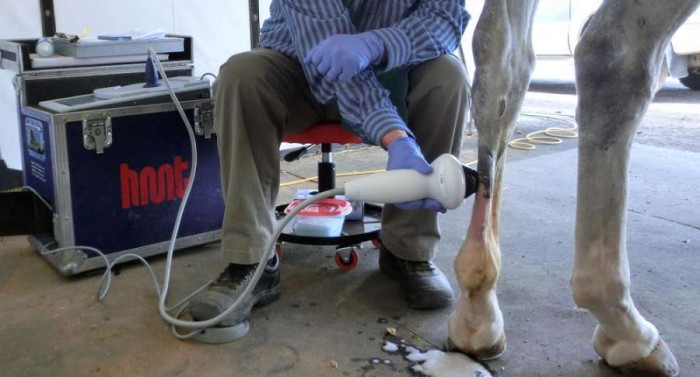
Effects of unfocused extracorporeal shock wave on wounds
The treatment of distal limb wounds can take a long time and is often complicated by delayed closure, formation of exuberant granulation tissue and scars. In horses unfocussed extracorporeal shock wave therapy (ESWT) is a relatively new therapy and there is very little scientific research done on horses so far. This article suggests that unfocused ESWT might help to prevent exuberant granulation tissue formation and chronic inflammation of distal limb wounds.
Shockwave therapy uses sound waves (pulsed high-energy pressure waves) applied to the tissue, resulting in a release of kinetic energy which will react with the tissue. Five surgical made wounds were created under sedation on both forelimbs in six horses. The wounds of one leg of the horse were immediately treated with 625 shock wave pulse from ESWT after wound creation, whereas the other leg was only treated with bandaging.
The results show that the ESWT wounds were less inflamed and with less exuberant granulation tissue as the control wounds. This suggest ESWT had an anti-inflammatory effect on distal limb wounds. The ESWT wounds did not heal faster or better. The wounds closed at the same time, also the histological variables of the wounds did not differ. Previous studies showed that the dose of the ESWT can influence the effect of ESWT. This dose needs to be adjusted for the size of the wound and differs between species. Further studies are needed on the effect of ESWT on horses.
Have you ever used shock wave therapy on your horse and did your horse benefit?
Expert opinion by Annet Veen
In humans shock wave therapy is well known and often used. There are a lot of scientic studies done on the benefits from ESWT, however in equine scientic evidence is not yet found due to a lack of studies. This study already suggest that a different dose of the ESWT could alter the outcome. Therefor it would be very usefull if more studies will be performed, so we can have a better view on the benefits and application of this therapy.
> From: Silveira et al., Am J Vet Res 71 (2) (2010) 229-234. All rights reserved to The Authors. Click here for the online summary.


